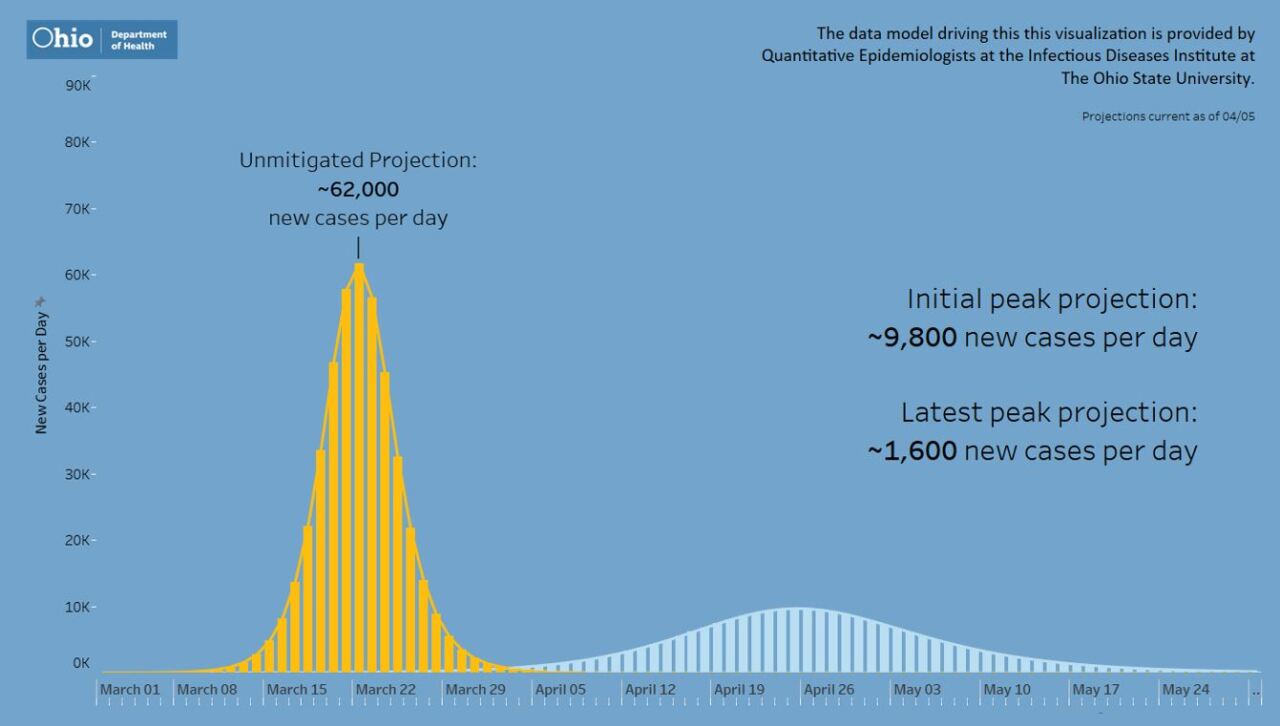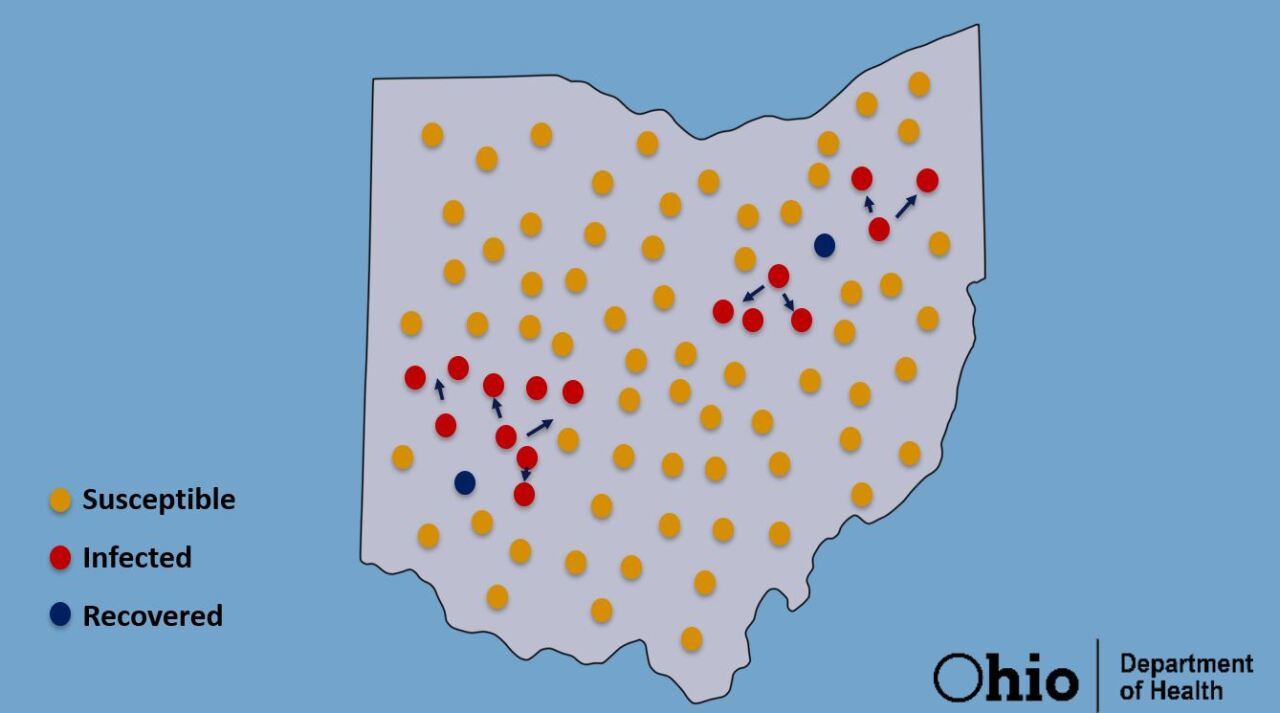By all accounts, Ohio is successfully “flattening the curve,” and models show that the aggressive steps taken to socially distance have dropped the state's recent projected peak of about 10,000 new cases per day to 1,600, according to Dr. Amy Acton, head of the Ohio Department of Health.
The initial projected peak, even with mitigating social distancing measures, was about 9,800 new cases per day near the end of April. The latest projection shows a significantly flatter curve, with a longer peak from about mid-April to the end of the month.

“Our latest projection is 1,600 cases per day — still a lot of cases per day, still a load on our hospitals, but this is the effect you have done,” Acton said. “In Ohio we took our prediction and you have basically done this… you have squashed this and you have stretched it. Honestly, this is you. This is what you have done. This is how you have saved lives.”
If Ohio had done nothing and left the coronavirus spread completely unmitigated, we could have seen as many as 62,000 new cases a day at the peak, which would have been in mid-March, Acton said during the state’s daily coronavirus briefing on Wednesday. One model even showed as many as 98,000 new cases a day.

Acton addressed the wide discrepancies in modeling, saying it took about two weeks to see the effects of the strict social distancing in Ohio.
“If we stopped today, if we all ran outside, in two more weeks, we would have gone way back up again,” Acton said. “That’s the thing. We need to hold steady. We need to hold the course.”
RELATED: Ohio coronavirus model discrepancies leave some with questions
In fact, modeling being done by MetroHealth and used by the Cuyahoga County Board of Health shows that rather than a peak, we will instead see clusters of the disease over a longer period of time.
"For us, I don't think this will be a big surge and be over. I think for our community, again, this is just based on modeling I'm seeing, there is probably something in between both models that apply to our community," said Dr. Heidi Gullett with the CCBH. "And it is possible there will be multiple surges at some point over time, particularly if people don't adhere to the stay-at-home order."
RELATED: CCBH medical director contrasts surge with model showing clusters of COVID-19 cases over time
The punchline, Acton said, is this: “Every single modeler, everyone who talks about it, is saying that we must keep doing what we're doing. You're succeeding – you’re succeeding. But the second you ease back, we'll see ourselves in an outbreak that will really overwhelm our health care system.”
Acton explained that the modeling that her department is following is the “SIR” model, which stands for susceptible, infected, recovered.
Because COVID-19 is caused by a novel coronavirus, the entire state of Ohio, and the entire world, was in the “susceptible” category.

Although the state took very aggressive measures, there were infected travelers coming into the state before they were taken.
“We now know, and it’s been publicized, that many, many people came back from places that were endemic with the virus and brought it back all over this country and it was seeding in this country,” Acton said.
Some of the cases that landed in Ohio were known, but many weren’t, and they began to spread. Acton said an infected person, on average, was infecting 2.5 to 3 people. Those people go on to infect more, causing the logarithmic spread of the disease.

“This is really back to: how infectious is this disease? How quickly does it double?” Acton said. She said she’s seeing doubling times in the United States of three days to six days, and we want to get those times out to a doubling time of 12 days or more before we can begin to ease off on the measures we’ve been taking.
Now we are beginning to see people in the third category: recovered.
“They are the people who we are going to be detecting through our antibodies,” Acton said. “They are going to be part of our recovery plan. They are also part of the people who can donate some of their plasma so that we can use antibodies as a form of treatment.”

As of Wednesday, over 53,000 Ohioans have been tested for COVID-19. There are 5,148 cases of the disease in 83 of Ohio’s 88 counties. There have been 1,495 hospitalizations, or 29% of known cases, and 472 ICU admissions, representing 9% of the population with the disease. As of Thursday morning, 193 Ohio residents have died from COVID-19, 4% of the 5,148 cases so far.
The state has not yet released much data on the number of people recovered from coronavirus, but it promises more recovery data is coming.
RELATED: New coding will help Ohio report COVID-19 recovery cases soon
Ultimately, the models show that the next several weeks will be bad in terms of new cases and deaths.
Acton said, “We're going in the right direction, but we are not out of the woods.”





